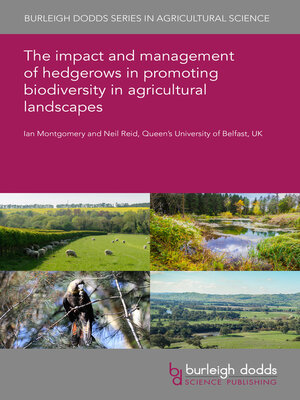The impact and management of hedgerows in promoting biodiversity in agricultural landscapes
ebook ∣ Burleigh Dodds Series in Agricultural Science
By Dr Ian Montgomery

Sign up to save your library
With an OverDrive account, you can save your favorite libraries for at-a-glance information about availability. Find out more about OverDrive accounts.
Find this title in Libby, the library reading app by OverDrive.



Search for a digital library with this title
Title found at these libraries:
| Library Name | Distance |
|---|---|
| Loading... |
Farm hedgerows supply diverse benefits to agriculture including pollination, pest control and improved production related to biodiversity. They also provide additional ecosystem services including carbon sequestration, shelter for crops and livestock, human well-being, and a bucolic aesthetic. This chapter explores the impact and management of hedgerows in promoting biodiversity in agricultural landscapes. The chapter begins by outlining the origins and management history of hedgerows. Discussion then moves to ecological processes and biodiversity in hedgerows, covering hedge structure and woody species, ground flora, belowground biodiversity, decomposition and nutrient cycling, invertebrate predators and parasites, pollinators, birds, bats, other mammals. Landscape factors influencing hedgerow biodiversity are then described, followed by a case study of hedgerows in Northern Ireland. Next, the wider benefits of increased biodiversity in hedgerows and key hedgerow management techniques to enhance biodiversity are highlighted. Finally, barriers to conservation management of hedgerows, policy affecting hedgerows are explored.







